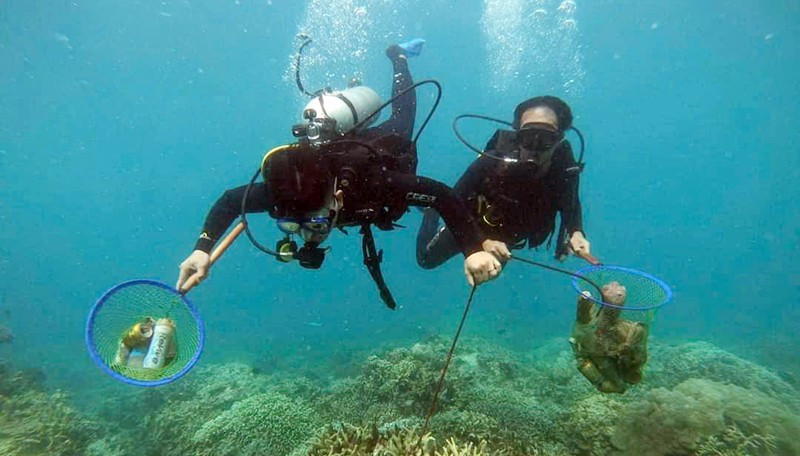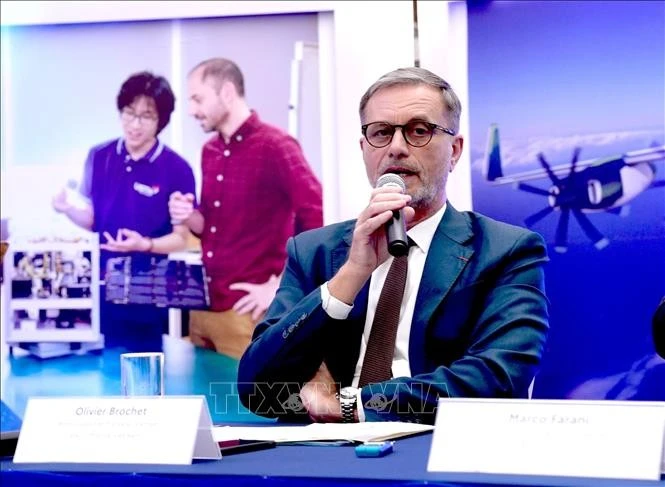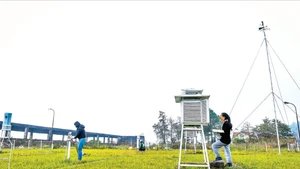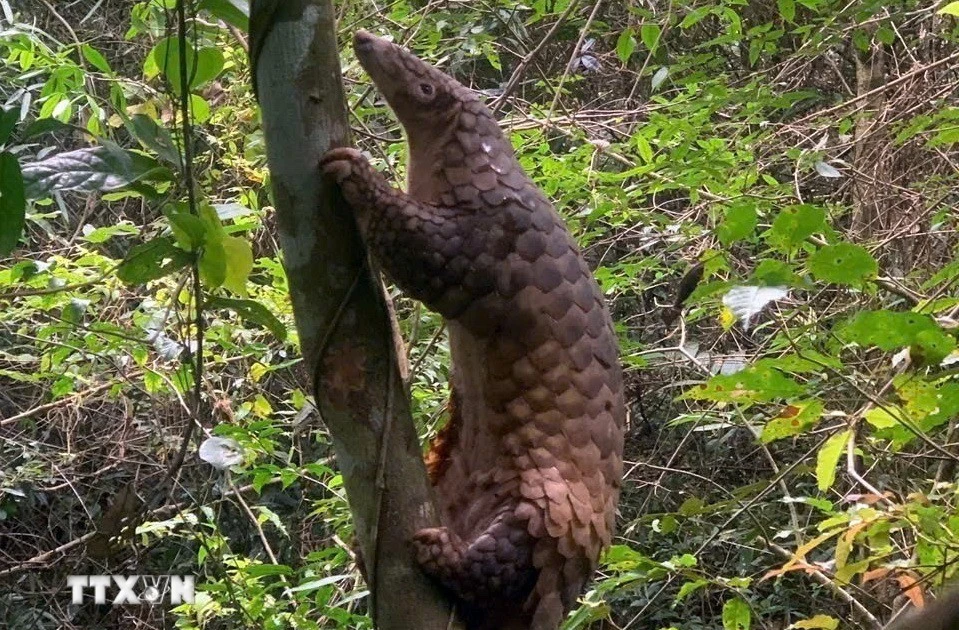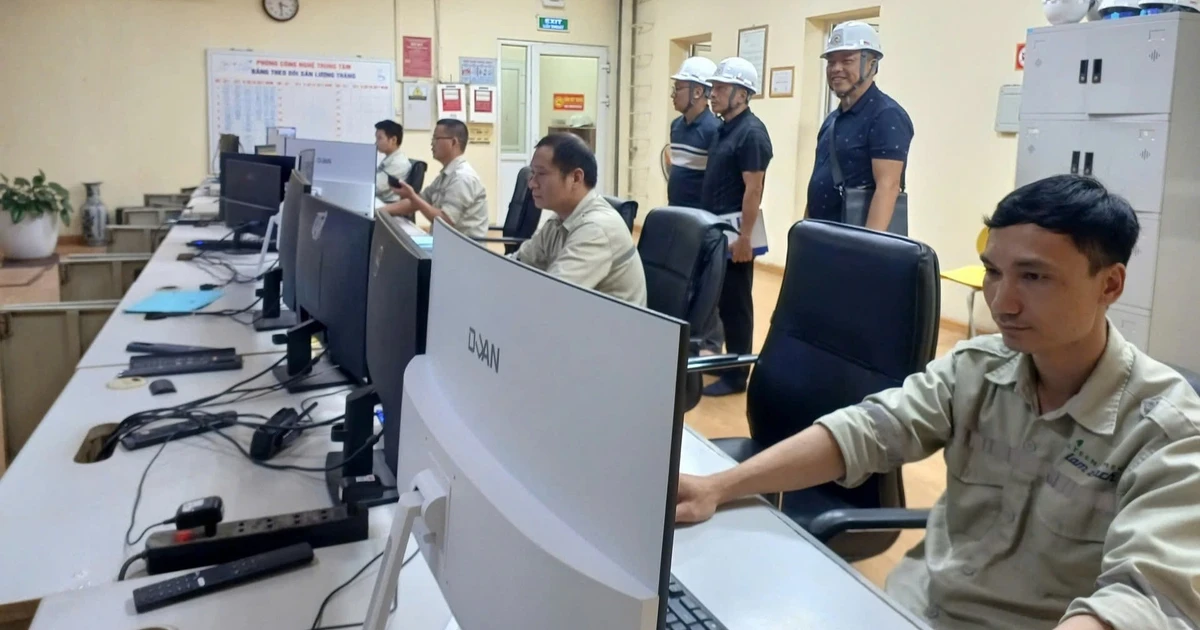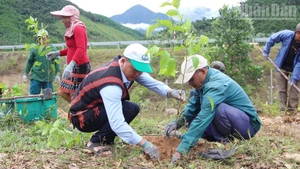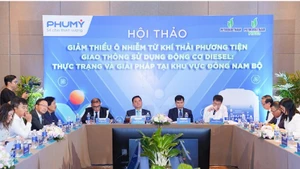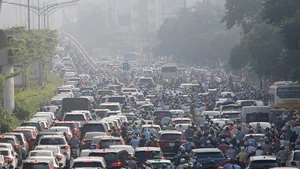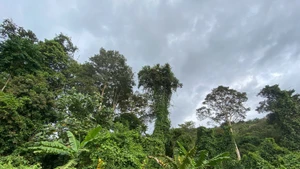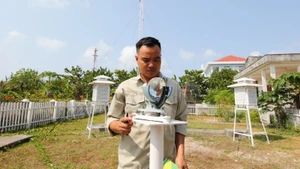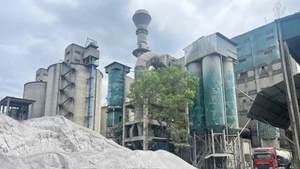Although we had arranged to meet with the Nha Trang Bay Management Board, prolonged rough seas prevented us from reaching the Hon Mun Marine Protected Area within Nha Trang Bay. Instead, we relied on documentary footage from scientists to gain a basic understanding of the coral reef ecosystem and the conservation efforts at the Hon Mun Marine Protected Area.
Through the footage, we could appreciate the mesmerising beauty of the coral reefs, with their diverse coral communities and marine life in various colours. Marine scientists affirm that coral reefs are among Earth's most biologically diverse ecosystems, likening them to underwater tropical forests.
Dam Hai Van, Deputy Head of the Nha Trang Bay Management Board, explained that the Hon Mun Marine Protected Area was established in 2001, covering approximately 160 square kilometres — comprising about 38 square kilometres of land and 122 kilometres of water. The project was implemented by the Ministry of Fisheries, Khanh Hoa People's Committee and the International Union for Conservation of Nature (IUCN), with funding from the Global Environment Facility through the World Bank, the Royal Danish Government through DANIDA, and IUCN. This was Vietnam's first marine protected area.
Survey results revealed that Hon Mun's coral reefs are of international significance and possess the highest level of biodiversity in Vietnam, featuring over 350 species of reef-building hard corals, more than 230 reef fish species, 112 mollusc species, 112 crustacean species, 27 echinoderm species, 69 seaweed species, and 7 seagrass species. With its geological tourism appeal, world-class diverse coral ecosystem, and marine ecological treasures, Hon Mun strongly attracts marine enthusiasts and marine science researchers.
Since its establishment, Hon Mun Marine Protected Area has implemented various management solutions to prevent harmful activities affecting marine ecosystems, protect and enhance marine ecosystem values create alternative livelihoods and new occupations for the community, attract infrastructure investment in transportation and tourism, and raise awareness among residents and tourists about environmental protection and marine biodiversity conservation. This has truly become a model for marine ecosystem conservation and blue marine economy development linked to marine and island nature conservation.
However, by early 2022, media outlets reported severe degradation of coral reefs in the Hon Mun Marine Protected Area. Images showed that Hon Mun's seabed, once vibrant with shimmering coral reefs and abundant marine life, had become strewn with broken coral fragments and desolation.
Such a general description does not fully convey the significance of the issue. But a simple computer search yields 24.8 million results about "coral bleaching" and over 2.2 million articles about coral death, demonstrating worldwide concern about the issue of coral bleaching and mortality.
Marine scientists explain that in the ocean world, coral reefs provide habitat and food for over 4,000 fish species, 800 coral species, and thousands of other marine organisms. Thus, coral ecosystems are considered the most important ocean biomes, serving as a "cradle" for other marine and ocean ecosystems.
Scientific surveys showed that in 2015, coral coverage in Hon Mun's southwest and southeast was healthy at around 52%. By 2022, coral coverage had dropped to less than 11%, categorised as poor. This raised questions about when this degradation began and its causes.
Dr Vo Si Tuan, former Director of the Institute of Oceanography, explained that scientists had repeatedly warned about coral reef degradation in Nha Trang Bay. The reefs faced excessive negative impacts, with even divers' sunscreen severely affecting the corals. In addition to weather factors and climate change, there were also issues with blast fishing, poison fishing, and more recently, excessive tourism in the bay, coastal construction, sea encroachment, and increased flood water from upstream.
Given the serious degradation of Nha Trang Bay's environment, particularly Hon Mun's coral reefs, on June 21, 2022, the Khanh Hoa Provincial Party Committee issued a notice requesting preservation and restoration of Nha Trang Bay, including Hon Mun's coral reefs, identifying this as both an urgent and long-term task.
Subsequently, Khanh Hoa authorities directed investigations into the causes of marine ecosystem decline and proposed solutions. A survey on June 12, 2022 revealed extensive damage not only to Hon Mun's coral reefs but also to many other areas in Nha Trang Bay. The coral decline in numerous locations exceeded 70% compared to 2015 survey results.
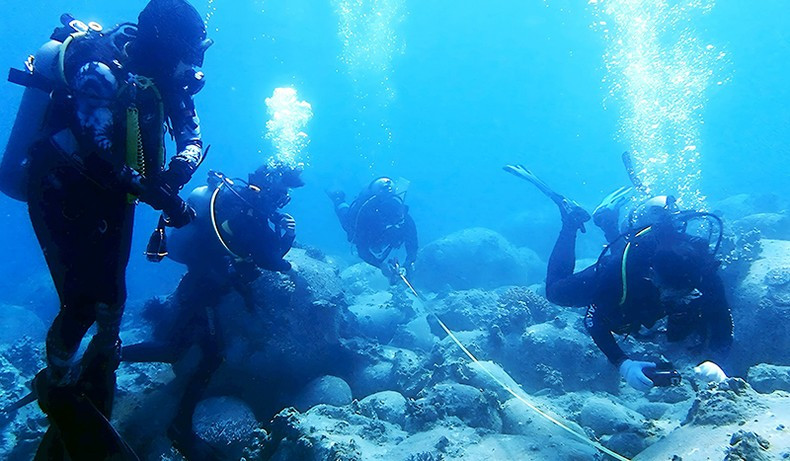 |
| Divers measure and check coral reef recovery at Hon Mun. |
To gradually restore Hon Mun's coral reefs, from late June 2022, Nha Trang City ordered the temporary suspension of swimming, diving, boat activities, and glass-bottom boats around Hon Mun Island, and relocated a fish pen of Doan Ket Cooperative from Hon Mun's strictly protected zone.
Additionally, regular monitoring of coral reef ecosystems, crown-of-thorns starfish removal (a coral predator), and seabed clean-ups at Hon Mun were implemented, alongside public awareness campaigns about marine environmental protection.
Since June 2022, when diving activities were suspended to allow coral reef recovery, divers from the Nha Trang Bay Management Board conduct quarterly dives to collect images and measure coral growth to assess recovery signs.
According to Deputy Head Dam Hai Van, Hon Mun's coral reef ecosystem has shown considerable but slow recovery after these incidents. This is explained by the biological characteristics of reef-building hard corals, which only grow about 1 centimetre per year.
Khanh Hoa Vice Chairman Tran Hoa Nam reported initial positive results, with coral reefs showing recovery signs and, most notably, improved community awareness about Nha Trang Bay's biodiversity conservation and better inter-agency coordination in bay management. To continue implementing the comprehensive Nha Trang Bay restoration plan, including coral reef recovery, the provincial government approved a project on creating nurseries to supply reef-building coral seedlings for restoration and regeneration of coral reef ecosystems in Nha Trang Bay.
Alongside coral ecosystem restoration measures, creating sustainable livelihoods for local residents linked to Hon Mun coral reef conservation is considered crucial. According to Nguyen Thi Thu Huyen, National Coordinator of the GEF Small Grants Programme, after over a year of implementation, the project on promoting dialogue and cooperation between communities and private sector with state agencies in coral reef conservation and sustainable development of Hon Mun has achieved very positive results, including the creation of sustainable marine conservation-linked livelihoods for residents in Bich Dam Residential Area, Vinh Nguyen Ward, Nha Trang City.
A very encouraging sign is that Bich Dam is currently being developed by Khanh Hoa Province and international organisations into a community tourism destination, incorporating it into Nha Trang Bay's overall development space and defining Bich Dam and Hon Mun marine area's development space in Nha Trang Bay's functional zoning diagram. With sustainable livelihoods for local residents, Hon Mun coral reef ecosystem conservation will become much more favourable and effective.
